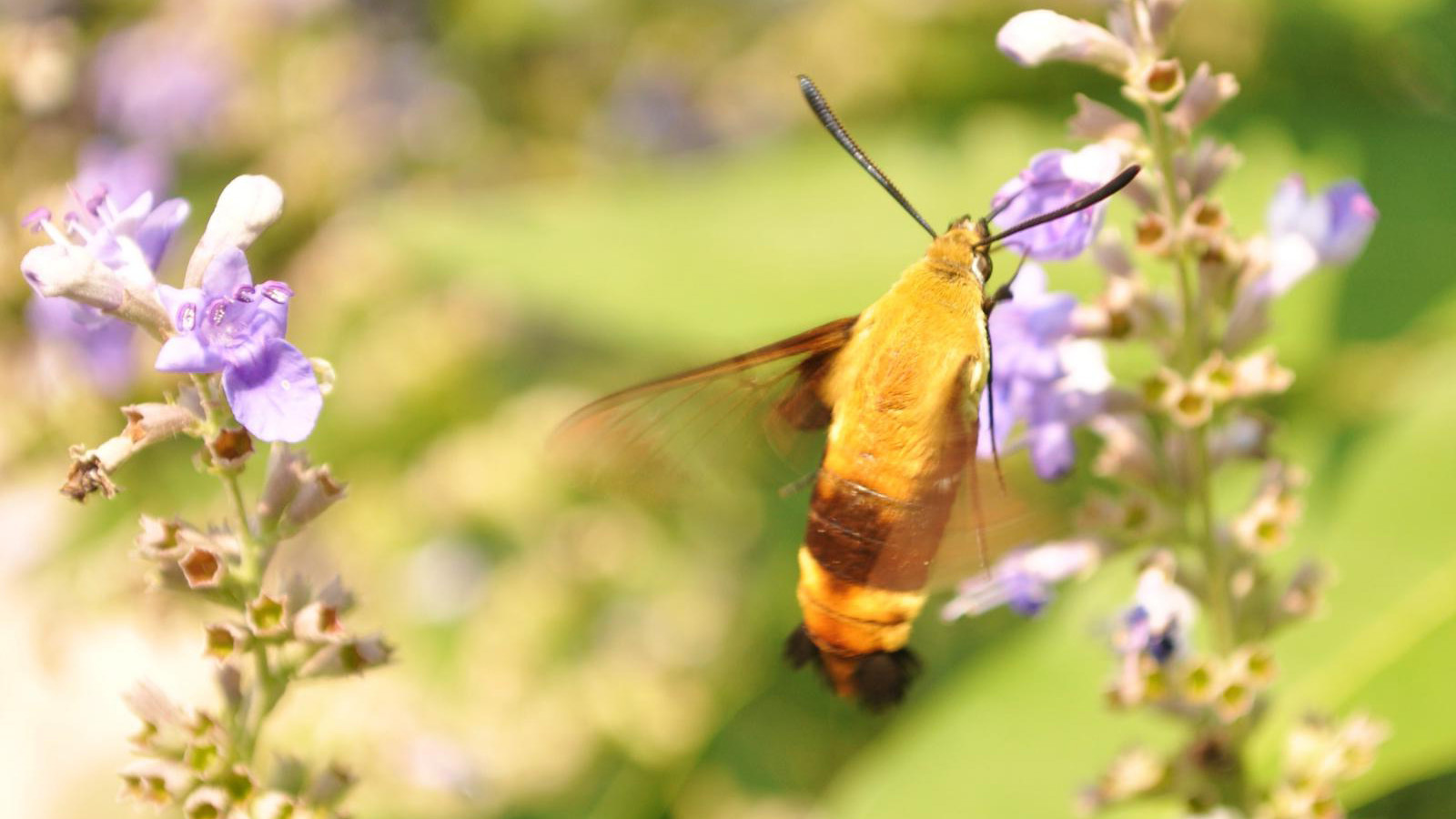
Pollination is essential for plant reproduction, but did you know that bees aren't the only pollinators? Unusual pollinators like flies, bats, lemurs, and even lizards play crucial roles in this process. These unique creatures have fascinating adaptations that make them effective at transferring pollen. For instance, the black and white ruffed lemur in Madagascar helps pollinate the towering traveler's tree, while the honey possum in Australia aids banksia and eucalyptus plants. Even marine invertebrates like shrimp contribute to pollinating seagrasses. Understanding these lesser-known pollinators highlights the incredible diversity of life and the intricate relationships that sustain our ecosystems.
Key Takeaways:
- Unusual pollinators like flies, bats, and even shrimp play a crucial role in plant reproduction, showcasing the diverse and fascinating world of pollination beyond just bees.
- Pollinators, including native bees and honey bees, are essential for agriculture and food production, contributing to the global economy and providing one in every three bites of food we eat.
The Fascinating World of Unusual Pollinators
Pollination is essential for plant reproduction, involving the transfer of pollen from the male parts of a plant to the female parts. While bees are the most well-known pollinators, many other creatures contribute to this vital process. Let's explore some unusual pollinators and their unique roles.
Beyond Bees: Diverse Pollinators
Pollinators come in many shapes and sizes, each with unique adaptations that make them effective at their job. Here are some fascinating facts about these lesser-known pollinators.
-
Bees Make Your Strawberries Last Longer
Bee pollination improves the quality and shelf-life of strawberries more effectively than hand or wind pollination. Complete fertilization by bees triggers hormones that enhance fruit quality. -
Bees Aren't the Only Pollinators
Pollinators include a wide range of organisms like wasps, flies, moths, butterflies, beetles, mosquitoes, wind, water, birds, and even some shrimp. These diverse forces help disperse pollen and fertilize plants. -
Flies Are the Early Risers
Flies are among the first pollinators to emerge in early spring, especially in alpine zones. Their early activity is crucial for the initial stages of plant reproduction. -
Evolution Has a Lot to Do with It
Some plants and insects have evolved together. For instance, the Madagascar orchid's deep nectar spur led to the Sphinx moth developing a long "tongue" to reach the nectar, showcasing co-evolution.
Unique Adaptations of Pollinators
Pollinators have developed fascinating adaptations to fulfill their roles. These adaptations often involve unique behaviors or physical traits that make them effective at transferring pollen.
-
Body Odor Isn't All That Bad
The bog orchid emits a scent similar to human body odor, attracting mosquitoes that aid in its pollination. This adaptation highlights how plants use various cues to attract pollinators. -
Plants Are Faster Than Nascar
The bunchberry plant has the fastest pollen dispersal, shooting pollen at 6,700 miles per hour. Mulberry plants follow at 740 mph, aiding pollination by throwing pollen far into the air. -
Seagrasses Need Pollinators Too
Seagrasses are pollinated by marine invertebrates like shrimp and isopods. Some marine plants use water for pollination, with eelgrass creating vortices that trap male flowers for fertilization. -
You Can Attract Hummingbirds with Vining Honeysuckles
Vining honeysuckles attract hummingbirds, which can be aggressive competitors for nectar. Their behavior underscores the strong competition for this valuable resource.
Plants' Clever Tricks to Attract Pollinators
Plants have evolved various strategies to attract pollinators, from mimicking insects to using vibrant colors. These tricks ensure that pollinators visit and help with reproduction.
-
Plants Use Sex Appeal Too
The bee orchid looks like a bee, attracting actual bees looking to mate. Some plants use color contrasts to make their nectar spurs more visible to pollinators. -
Bats Are Pollinators, But Not Here
Southern fruit bats are strong pollinators, but in New England, local bat species do not aid pollination. They are nocturnal insect-eaters, making them less relevant to local pollination. -
Pollen Can Help You Travel in Time
Pollen can last in soil for thousands of years. Scientists have dated pollen to 14,000 years ago, helping reconstruct ancient vegetation and showing plant evolution over time. -
Global Warming Has Not Stumped the Bees
Bees have adapted to global warming, though the impact on pollinators is complex. Understanding these changes requires careful study.
The Importance of Pollinators in Agriculture
Pollinators are essential for the production of many crops. Their role in agriculture cannot be overstated, as they ensure the reproduction of plants that provide food for humans and animals.
-
Pollinators Are Hired Help
Over 70% of flowering plants need pollinators to produce fruit and seeds. This includes many crops like canola, alfalfa, tree fruits, and certain vegetables. Managed bee hives are often placed near fields to encourage pollination. -
Bees Can Carry More Than Pollen
Bees can carry pathogens like fungi and insect pests, which can harm crops. However, indiscriminate pesticide use can harm bees and other plants and animals, highlighting the need for careful management. -
Pollinators Thrive in Cold Climates Too
Insects like flies pollinate plants even in cold climates. Research in the Canadian Arctic shows many plants require cross-pollination by insects, even in harsh conditions. -
Pesticides Should Be Used Carefully
Pesticides pose a significant threat to pollinators. Neonicotinoids, in particular, have devastated bee populations. Greater intervention is needed to curb their use and protect pollinators.
Unusual Pollinators Around the World
Some pollinators are truly unique, with adaptations that make them stand out. These creatures play crucial roles in their ecosystems, often in unexpected ways.
-
Black and White Ruffed Lemurs: The World’s Largest Pollinator
In Madagascar, black and white ruffed lemurs pollinate traveler’s trees. They use their nimble hands to open tough flower bracts, collecting pollen on their fur and transporting it to other flowers. -
Honey Possums: Pollinators of Banksia and Eucalyptus
The honey possum of Australia pollinates banksia and eucalyptus flowers. With grasping feet, a prehensile tail, and a long tongue, it effectively drinks nectar and collects pollen. -
Tropical Bats: Pollinators in the Equator Belt
Tropical bats pollinate plants in South and Central America, Africa, and Asia. They play a crucial role in these regions, often being the primary pollinators. -
Lizards, Geckos, and Skinks: Unlikely Pollinators
Lizards, geckos, and skinks can also be pollinators. The Noronha skink in Brazil drinks nectar from mulungu tree flowers, with pollen adhering to their scales as they visit other flowers.
Small but Mighty Pollinators
Even the smallest creatures can have a big impact on pollination. These tiny pollinators may not be as well-known, but they play crucial roles in plant reproduction.
-
Slugs, Gnats, and True Bugs: Small but Mighty Pollinators
Slugs, gnats, and true bugs are important pollinators. These small organisms contribute significantly to the reproduction of plants. -
The First Pollinator: A Small Earwig-Like Insect
The first pollinator was a small, earwig-like insect called a tillyardembiid. Fossil records show this insect with pollen from gymnosperms attached to its body, predating flowering plants. -
The Flower Beetle: A Pollinator of Angiosperms
The flower beetle from Burma pollinated angiosperms after they diversified during the Cretaceous period. This beetle exemplifies how insects evolved to pollinate various plant species. -
The First Known North American Honey Bee
The first known North American honey bee was found as a carbon print from the Neogene period. This discovery highlights the long history of honey bees in North America.
The Economic Impact of Pollinators
Pollinators are not just important for ecosystems; they also have a significant economic impact. Their role in agriculture and food production is invaluable.
-
Pollinators Are Essential to Human Food
Pollinators are responsible for pollinating over 180,000 plants and 1,200 crops worldwide. They add around $233 billion to the global economy and are responsible for one in every three bites of food we eat. -
Pollinators Are Found on Every Continent Except Antarctica
Pollinators are found on every continent except Antarctica. With 200,000 types of pollinators, they are an extremely diverse group of animals. -
Climate Change Affects Pollinator Health
Climate change decreases biodiversity, leading to less food for pollinators and a decrease in their population. Warmer temperatures also lead to earlier growing seasons, creating a lack of food for pollinators. -
Understanding Pollination
Pollination involves the transfer of pollen from the male parts to the female parts of a plant, producing seeds and fruit. Pollinators help with cross-pollination, expanding genetic diversity.
The Role of Native Plants
Native plants play a crucial role in supporting local ecosystems and providing habitat for native pollinators. Preserving these plants is essential for maintaining biodiversity.
-
The Importance of Native Plants
Native plants are indigenous to a given area and support local ecosystems. Preserving native plants ensures the health of local pollinator populations. -
Pollinator-Friendly Recipes
Pollinators inspire delicious recipes. For example, a tomato avocado bruschetta uses ingredients pollinated by bumble bees and flies, while an apple crumble can be finished with honey from honey bees.
The Long History of Bees
Bees have been around for millions of years, playing a critical role in agriculture and human society. Their complex social structure and products have made them invaluable.
-
Bees Have Been Around for Over 100 Million Years
Bees have existed for more than 100 million years. Humans learned to harvest honey almost 8,000 years ago, and bees have been integral to agriculture ever since. -
Bees Are the Only Insect That Produces Food Consumed by Humans
Honey bees produce honey, pollen, and beeswax, all harvested from their hives and integral to human society for thousands of years. -
Bees Have a Complex Social Structure
Bees have different roles for queen bees, worker bees, and drone bees. The queen lays eggs, worker bees forage and care for young, and drone bees mate with the queen. -
Bees Are Crucial for Agriculture
Bees pollinate many crops, including canola, alfalfa, and tree fruits. Without bees, these crops would not reproduce, leading to significant economic losses and food shortages. -
Threats to Bees
Bees face threats like habitat loss, pesticide use, and climate change. These threats can lead to a decline in bee populations, impacting agriculture and food security.
The Importance of Native Bees
Native bees are also important pollinators, playing crucial roles in local ecosystems. They are often less well-known than honey bees but are equally vital for plant reproduction.
-
Native Bees Are Important Too
Native bees are vital pollinators in local ecosystems. They contribute significantly to plant reproduction and biodiversity. -
Beekeeping: The Practice of Managing Bee Colonies
Beekeeping involves managing bee colonies to produce honey and other bee products. Beekeepers provide a safe environment for bees and often move hives to different locations for optimal pollination. -
Beeswax and Bee Bread: Important Products from Bees
Beeswax is used in candle-making and cosmetics, while bee bread, a mixture of pollen and honey, serves as food for young bees. -
Famous Beekeepers: Pioneers in Beekeeping
Famous beekeepers have developed new techniques for managing bee colonies and promoted the importance of pollinators. -
The Future of Pollinators: Challenges and Opportunities
The future of pollinators involves challenges like habitat loss and pesticide use, but also opportunities for conservation and sustainable practices. Supporting pollinators through sustainable agriculture and habitat preservation ensures their continued health.
The Vital Role of Unusual Pollinators
Unusual pollinators play a crucial role in maintaining our ecosystems and food supply. From flies and mosquitoes to lemurs and lizards, these diverse creatures ensure the reproduction of countless plants. Without them, many crops and wild plants would struggle to survive. Their unique adaptations, like the Sphinx moth's long tongue or the honey possum's grasping feet, highlight the incredible diversity of nature. Protecting these pollinators means preserving their habitats and reducing pesticide use. By understanding and appreciating these lesser-known heroes, we can take steps to ensure their survival. Supporting native plants and creating pollinator-friendly gardens are simple ways to help. Let's celebrate and protect these fascinating creatures, ensuring they continue to thrive and support our planet's biodiversity.
Frequently Asked Questions
Was this page helpful?
Our commitment to delivering trustworthy and engaging content is at the heart of what we do. Each fact on our site is contributed by real users like you, bringing a wealth of diverse insights and information. To ensure the highest standards of accuracy and reliability, our dedicated editors meticulously review each submission. This process guarantees that the facts we share are not only fascinating but also credible. Trust in our commitment to quality and authenticity as you explore and learn with us.


